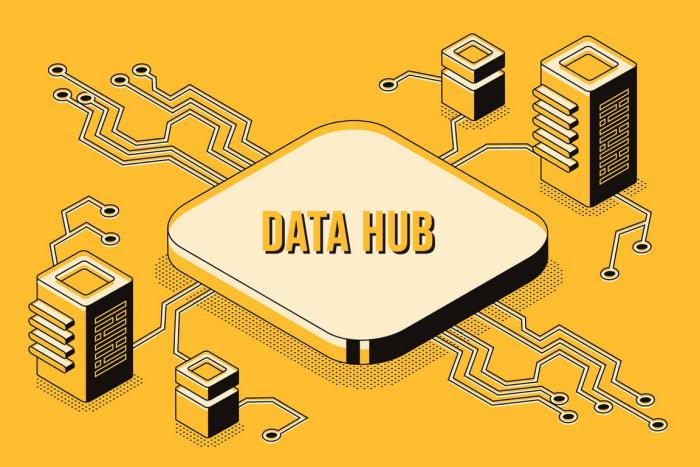5 Key Benefits That Make Data Hub Architecture So Lucrative For Businesses
In today’s ever-evolving world of technology, data is the name of the game. It acts as a driving force behind a company making the right decisions at multiple junctures in the business. But, despite the fact that data aggregation and management systems have grown in leaps and bounds over the years, not all companies have been successful in making the most of it. This is because the valuable asset is spread across different sources and systems, making it difficult for analytical systems to come into play. Luckily, this is where a data hub excels. What are some of its distinct advantages and why should you be shifting to one?
What is a data hub?

Before we can get to what makes a data hub so ingenious, we first need to understand what a data hub exactly is and how it functions. So, a data hub is essentially a newer architectural system that functions as a common point of access for data sources and data consumers alike. It serves as a single platform for all stakeholders irrespective of the scale of the part they play in data integration.
A data hub is not to be confused with a data warehouse or a data lake. Though these terms are often interchanged, they are radically different in their approach to managing data. A data hub architecture features a combination of data integration types and deals with data of the highest quality. It can also be used for a variety of purposes, whether it be operational sciences, analytical sciences, or machine learning models.
What does a data hub architecture comprise?
A data hub architecture is cleverly designed to act as a one-stop solution to all your data management needs. It does so by the combination of a series of layers working together cohesively. These layers consist of:
- Source system layer– The first and the foremost layer of a data hub that is responsible for extracting data from umpteen sources and integrating it within a unified data hub
- Data integration layer– The most crucial layer of a data hub architecture that is integral to making the data more palatable for consumer use
- Storage layer- The next layer is important in the process of data management and corresponds to its varied needs
- Data access layer- The second to last layer of a data hub architecture that works to combine all the different access points involved in the processing of data.
- Orchestration layer- The last layer whose purpose is rather self-explanatory, takes care of the all-important aspect of data governance
What are the inherent benefits of a data hub?
A large number of growing businesses today are making the shift from traditional methods of data storage to a data hub for all the right reasons! Here’s a rundown of some of the distinct advantages of a data hub.
1. Faster decision-making
The central concept behind a data hub is the creation of a common platform that is accessible to all those involved. This easy access to data amplifies the process of decision-making, a trait crucial in today’s fast-paced and cutthroat industry wherein a single wrong decision could spell doom.
2. Better data governance
Maintaining a large collection of data silos can be an extremely tiring process given that the capabilities and the security policies for each one differ from another. But, with a data hub, these disparate stores of data get aggregated into a single platform, thus ensuring better data governance. You get to enforce the latest data security protocols across this platform to ensure better privacy for your consumers. In cases of a breach of protocol, thanks to a data hub model, it’s easy to track down where the lapse in security was and address it immediately.
3. Allows for easier scaling of systems
Since a data hub provides a common mediation point, there’s no need to create a brand-new point-to-point connection. This effectively translates to lesser resources required when scaling up operations.
4. Better data integration
A data hub allows for the unification of data from a variety of sources. This allows for such intricate data to be then pipelined towards specially created target systems. Moreover, with a data hub, it becomes easier for teams working at the different junctures of this process to look at the “big picture” and work towards a unified common goal.
5. Improved data visibility
A data hub works to filter and sort through data from hundreds of sources, making it easy for all users to get their hands on critical information and make valuable insights from them to positively impact the functioning of the company.
Conclusion
A data hub is a vast improvement over the conventional methods of data storage which accounts for faster rates of data-backed yet intuitive decision-making. It does so by providing a common platform of access to all those involved in the creation and eventual consumption of data. In addition to this, a data hub promises better data governance, easier data integration, and more rapid rates of scaling of operations.








